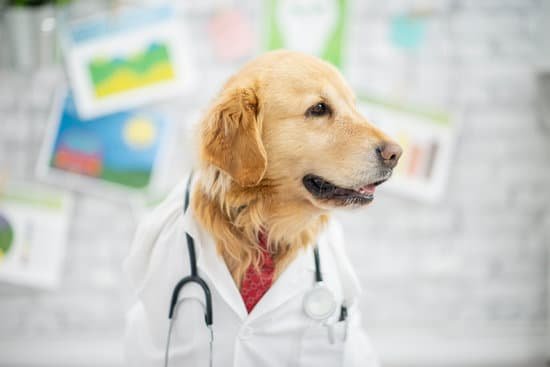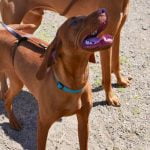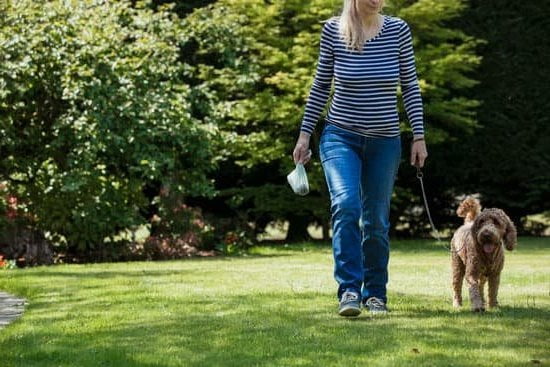Proper potty training is essential for a harmonious and clean cohabitation with our canine companions. Knowing how to train a dog where to pee and poop is crucial in ensuring the well-being of both the pet and their owners. Without effective potty training, dogs may exhibit undesirable behaviors such as soiling indoors, which can be frustrating and challenging to address.
Before embarking on potty training your dog, there are several factors to consider. These include the age and breed of your dog, your living situation, and your schedule. By evaluating these aspects, you can tailor your potty training approach to suit your specific circumstances and set realistic expectations for the process.
In this article, we will delve into the various strategies and techniques that you can employ to successfully potty train your dog. From setting up a designated potty area to establishing a consistent schedule, we will provide guidance on how to instill good potty habits in your furry friend. By following these tips and being patient and consistent in your training efforts, you can pave the way for a well-trained and happy dog.
Factors to Consider Before Starting Potty Training for Your Dog
When embarking on the journey of potty training your dog, there are several factors to consider that can greatly influence the success of the process. Firstly, it is crucial to understand that each dog is unique and may require different approaches to learning where to pee and poop. Factors such as age, breed, size, and health conditions should be taken into account when creating a potty training plan.
Physical Health and Ability
Before starting potty training, it is essential to ensure that your dog is in good physical health and able to control their bladder and bowels. If your dog is experiencing any medical issues that could hinder their ability to learn where to eliminate, it is important to address these concerns with a veterinarian before proceeding with potty training.
Environment
Consider the living situation of your dog when setting up a potty training plan. If you live in an apartment or high-rise building, access to outdoor potty areas may be limited. In such cases, you may need to explore alternative options such as using indoor pee pads or creating a designated bathroom area on a balcony. Understanding the limitations of your environment can help tailor the potty training approach accordingly.
Consistency and Commitment
Potty training requires consistency and commitment from pet owners. It is essential to set aside dedicated time for training sessions and follow through with established routines. Dogs thrive on structure and routine, so maintaining consistency in your approach will help reinforce good potty habits. Additionally, patience is key when teaching a dog where to pee and poop, as accidents are bound to happen during the learning process.
Setting Up a Designated Potty Area in Your Home or Yard
When it comes to potty training your dog, one of the key steps is setting up a designated area for them to do their business. This helps establish a routine for your furry friend and makes it easier for them to distinguish where they should pee and poop. Whether you live in an apartment or have a backyard, having a specific spot for your dog to relieve themselves can make the training process smoother.
Choosing the Right Spot
The first step in creating a designated potty area is choosing the right location. Ideally, it should be an easily accessible area that is away from where your dog eats and sleeps. If you have a yard, pick a spot that is convenient for both you and your pet. For those living in apartments, consider using pee pads or artificial grass on a balcony or designated indoor area.
Use Visual Cues
To help guide your dog to the designated potty area, use visual cues such as placing pee pads or marking the spot with colorful flags or signs. Dogs are highly visual animals and using these markers can help them associate that specific spot with going potty. Consistency is key here – make sure all members of the household are aware of the designated area and reinforce its boundaries.
By following these steps and being patient with your furry companion, you can effectively train them on where to pee and poop. Remember to praise and reward good behavior consistently, as positive reinforcement goes a long way in teaching dogs proper potty habits. With dedication and consistency, you’ll soon have a well-trained dog who knows exactly where to do their business.
Using Positive Reinforcement Techniques to Encourage Good Potty Habits
Positive reinforcement is a powerful tool when it comes to teaching your dog where to pee and poop. By rewarding desired behaviors, you can effectively communicate to your furry friend what you expect from them. Here are some tips on how to use positive reinforcement techniques for potty training:
- Use treats: Keep high-value treats handy when taking your dog outside to their designated potty area. As soon as they eliminate in the right spot, praise them enthusiastically and offer a treat as a reward.
- Utilize verbal cues: Consistency is key in potty training. Use specific phrases like “go potty” or “do your business” whenever you take your dog out to the bathroom. Over time, they will associate these cues with the act of eliminating.
- Give lots of praise: Dogs thrive on positive feedback from their owners. Shower your pup with praise, pets, and even playtime when they successfully go potty in the appropriate place.
Implementing positive reinforcement techniques can make the potty training process more enjoyable for both you and your dog. Remember to be patient and consistent in your efforts, as it may take time for your furry companion to fully understand what is expected of them.
- Avoid punishment: While accidents are bound to happen during the training process, it’s important not to scold or punish your dog for making mistakes. This can create fear or anxiety around bathroom habits and hinder progress.
- Establish a routine: Dogs thrive on routine, so try to take them out at the same times each day to reinforce good habits. Regular potty breaks after meals, playtime, and before bedtime can help prevent accidents indoors.
- Monitor their behavior: Watch for signs that your dog needs to go potty, such as circling, sniffing around, or suddenly becoming restless. By anticipating their needs, you can guide them towards the designated potty area promptly.
Establishing a Consistent Potty Schedule for Your Dog
To begin establishing a potty schedule, observe your dog’s natural bathroom habits. Typically, dogs need to go shortly after waking up, after eating or drinking, and before bedtime. Take note of these times and use them as guidelines for when you should take your dog outside. Remember, consistency is key in reinforcing the behavior of going potty in the designated area.
When you take your dog out on their scheduled potty breaks, make sure to praise and reward them immediately after they’ve done their business in the right spot. Positive reinforcement goes a long way in teaching dogs where they should pee and poop. Use treats, toys, or verbal praise to show your dog that they’ve done something good. Over time, they will associate going potty in the designated area with positive outcomes and continue the behavior.
| Benefits of Consistent Potty Schedule | Tips |
|---|---|
| Helps reinforce good habits | Observe natural bathroom habits |
| Establishes routine for your furry friend | Use positive reinforcement techniques |
| Reduces accidents inside the house | Praise and reward immediately after going potty outside |
Dealing With Accidents and How to Handle Them Effectively
Accidents are a common part of the potty training process for dogs, so it’s essential to know how to handle them effectively when they occur. Here are some tips on dealing with accidents and turning them into valuable learning opportunities for your furry friend:
- Stay Calm: When accidents happen, it’s crucial to remain calm and avoid reacting negatively towards your dog. Punishing your dog for accidents will only create stress and confusion, making it harder for them to learn where to pee and poop.
- Clean up promptly: It’s important to clean up accidents promptly and thoroughly to remove any lingering scents that may attract your dog back to the same spot. Use pet-safe cleaners to eliminate odors and discourage repeat accidents in the same area.
- Reinforce positive behavior: Instead of focusing on the accident itself, make sure to reward and praise your dog whenever they go potty in the designated area. Positive reinforcement will help reinforce good habits and encourage your dog to continue using the right spot.
Dealing with accidents is a normal part of the potty training process, so it’s important not to get discouraged by setbacks along the way. Consistency, patience, and positive reinforcement are key in helping your dog learn where to pee and poop.
Remember that every dog is different, so it may take some time for them to fully grasp where they should go potty. With dedication and a positive attitude, you can successfully train your dog where to pee and poop and enjoy a harmonious relationship with your well-trained companion.
Tips for Training Adult Dogs vs Puppies Where to Pee and Poop
Training adult dogs and puppies where to pee and poop can require different approaches due to their varying ages and past experiences. When it comes to adult dogs, they may already have established habits that need to be changed, while puppies are in the prime stages of learning.
For adult dogs, it is essential to understand that they may take longer to adjust to a new potty training routine. Patience is key when working with adult dogs, as they may have had previous owners or experiences that led to inconsistencies in their potty habits. Using positive reinforcement such as treats, praise, or playtime can help encourage them to learn the desired behavior.
On the other hand, puppies are like sponges when it comes to learning new things, including where to pee and poop. Consistency is crucial when training puppies, as they are still developing their bladder control. Taking them out frequently, especially after eating, drinking, or waking up from a nap, can help prevent accidents indoors.
When training both adult dogs and puppies where to pee and poop, creating a routine and sticking to it is vital. Establishing set times for potty breaks throughout the day can help regulate their bathroom habits and reduce the chances of accidents. Additionally, supervising them closely indoors and rewarding them for going in the designated potty area will reinforce the desired behavior.
| Effectiveness | Tips |
|---|---|
| Adult Dogs | Use positive reinforcement techniques |
| Puppies | Establish a consistent potty schedule |
Troubleshooting Common Potty Training Problems and Solutions
Training your dog where to pee and poop can sometimes come with challenges, but with patience and consistency, these problems can be resolved. One common issue that many pet owners face during the potty training process is accidents inside the house. Accidents are a normal part of the learning process, especially for young puppies who may not have full control over their bladder and bowels yet.
When accidents happen, it’s important not to scold or punish your dog. Instead, clean up the mess thoroughly to remove any odor that may attract your dog back to the same spot.
Another common problem that dog owners encounter is resistance from their furry friends when it comes to using the designated potty area. In some cases, dogs may refuse to go potty in a certain location due to discomfort or anxiety. If this happens, try reassessing the chosen spot – it might be too noisy, crowded, or exposed for your dog’s liking.
Experiment with different areas until you find one that your dog feels comfortable using. Additionally, make sure the area is easily accessible for your pet at all times.
If you find that your dog consistently ignores their designated potty area and goes elsewhere in the house or yard, consider revisiting your training methods. It’s possible that you’re not providing enough opportunities for your dog to go potty in the right place or that you’re not rewarding them appropriately when they do so successfully.
Stay patient and consistent in your approach, and don’t hesitate to seek advice from a professional trainer if needed. Remember, every dog is different, so it may take some trial and error to find what works best for your furry companion when it comes to potty training.
Conclusion
In conclusion, successfully training a dog where to pee and poop is not only essential for maintaining a clean living environment but also for fostering a strong bond between you and your furry companion. By taking the time to understand the importance of proper potty training, considering factors such as age and breed before starting the training process, and setting up a designated potty area, you can set your dog up for success.
Using positive reinforcement techniques, establishing a consistent potty schedule, and being patient and understanding when accidents happen are key components of effective potty training. Whether you are training an adult dog or a puppy, consistency and patience are crucial in teaching them the appropriate bathroom behavior.
By troubleshooting common potty training problems with patience and persistence, you can overcome any challenges that may arise during the training process. Ultimately, celebrating successful potty training results will not only lead to a happier and healthier living environment for both you and your dog but also contribute to a well-behaved and well-trained pet that brings joy to your life every day.
Frequently Asked Questions
How Do I Get My Dog to Pee and Poop in One Place?
To get your dog to pee and poop in one place, consistency is key. Start by choosing a designated spot for bathroom breaks and always take your dog to that location. Praise and reward them when they go in the right spot to reinforce the behavior.
How Do Dogs Decide Where to Pee or Poop?
Dogs use their keen sense of smell to decide where to pee or poop. They often mark their territory with their scent, so they may be influenced by other dogs’ markings in the area. Additionally, dogs are creatures of habit, so they may choose familiar spots based on past experiences.
How Do I Train My Dog to Poop in a Certain Area?
Training your dog to poop in a certain area requires patience and positive reinforcement. Start by taking them to the designated spot regularly, especially after meals or naps.
When your dog goes in the right place, reward them with treats and praise to create a positive association with that area. Repeat this process consistently until it becomes a habit for your dog.

Welcome to the blog! I am a professional dog trainer and have been working with dogs for many years. In this blog, I will be discussing various topics related to dog training, including tips, tricks, and advice. I hope you find this information helpful and informative. Thanks for reading!





